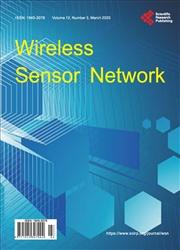Comparative Analysis of Ranging Protocols for Localization by UWB in Outdoor
引用次数: 3
Abstract
The rapid evolution of technology in the field of wireless telecommunications and micro components using MEMS technologies (Micro-electromechanical systems) has contributed to the expansion and rapid development of wireless sensor networks (WSN). This rapid development has contributed to the appearance of sensor and actuator networks (WSAN) or even to the Internet of Things with DL_IoT (Device Layer-Internet of Things). This rapid evolution of WSN is due to the enthusiasm generated by this last in industry and research. This new technology is used in several applications, particularly in the outdoor location of communicating nodes. The process of distance calculation between nodes (ranging) is a primordial phase for a precise location of these nodes. This paper presents the result of measurements do with three ranging protocols (TWR, TWR_Skew and SDS-TWR) implemented on DecaWiNo nodes. DecaWiNo nodes use the Ultra Wide Band (UWB) radio links, proposed by the IEEE 802.15.4 standard amendment of the year 2007, which provides a high performance ranging by ToF (Time of Flight). The results are very promising with precision errors of the order of 50 cm over 20 meters.室外超宽带定位测距协议的比较分析
无线通信和微型元件领域技术的快速发展促进了无线传感器网络(WSN)的扩展和快速发展。这种快速发展促进了传感器和执行器网络(WSAN)甚至物联网DL_IoT(设备层-物联网)的出现。无线传感器网络的这种快速发展是由于这最后在工业和研究中产生的热情。这项新技术用于多种应用,特别是在通信节点的户外位置。节点之间的距离计算(测距)过程是节点精确定位的基本阶段。本文介绍了在DecaWiNo节点上实现的三种测距协议(TWR、TWR_Skew和SDS-TWR)的测量结果。DecaWiNo节点使用2007年IEEE 802.15.4标准修正案提出的超宽带(UWB)无线电链路,通过ToF(飞行时间)提供高性能范围。结果非常有希望,精度误差为50厘米/ 20米。
本文章由计算机程序翻译,如有差异,请以英文原文为准。
求助全文
约1分钟内获得全文
求助全文

 求助内容:
求助内容: 应助结果提醒方式:
应助结果提醒方式:


